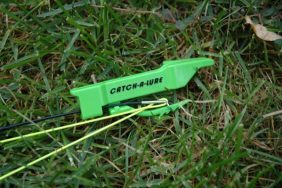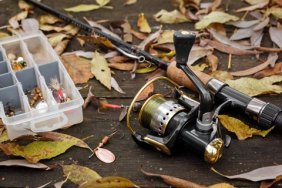 In Part One of this series, we explored some measures you can take to keep lures from being snagged, as well as some methods on how to free lures that become hung up on weeds, timber, and other objects. Today, we’ll take a look at some special tools you can pick up that will help ensure you don’t lose that expensive crankbait that you bought the day before.
In Part One of this series, we explored some measures you can take to keep lures from being snagged, as well as some methods on how to free lures that become hung up on weeds, timber, and other objects. Today, we’ll take a look at some special tools you can pick up that will help ensure you don’t lose that expensive crankbait that you bought the day before.
Other than a few quick shakes of a rod or using a pull-back approach to free a lure, you have some more options at your disposal. For instance, if your lure is visible, but just out of reach, it’s smart to reel in the line as you get closer and, if possible, jar it free with your rod tip. This technique is great for shallow submerged timber or low tree limbs that claim wind-swept casts.
One device that’s designed to free snagged lures is called a lure knocker. These are heavy weighted items that will slide down your line and knock the hook or jig free from whatever it is attached to. Be careful with them, though, as I’ve heard stories of lure knockers getting snagged on their way to retrieve a lure. If you don’t want to spend money on a lure knocker at your local fishing retailer, you can always improvise and make one with O-rings or a paperclip and some heavy sinkers.
Another popular tool for retrieving lures is a pole retriever. Comprised of a simple design—long pole with a corkscrew-like retriever at the end—pole retrievers are typically telescopic and can come in a variety of lengths. Most are made from lightweight aluminum, which makes holding them high to secure lures much easier, and the corkscrew slides easily and securely into your lure’s hooks for quick removal.
Remember, getting snagged is part of catching fish, so if you’ve ever been snagged, smile; you’re doing something right. Hopefully, the techniques outlined in this miniseries will help ensure that, after a long day on the water, you go home with the same amount of tackle you left with.








